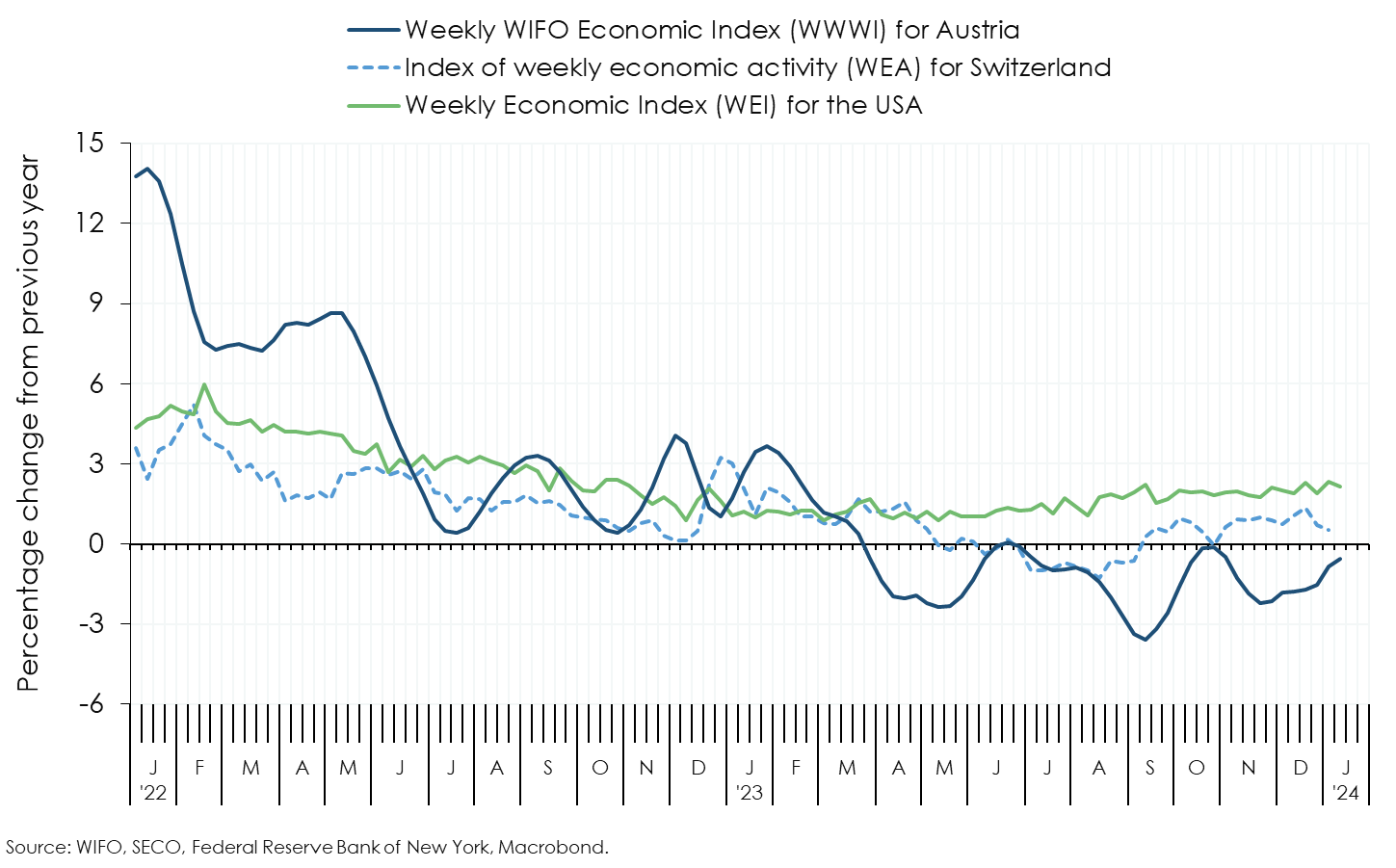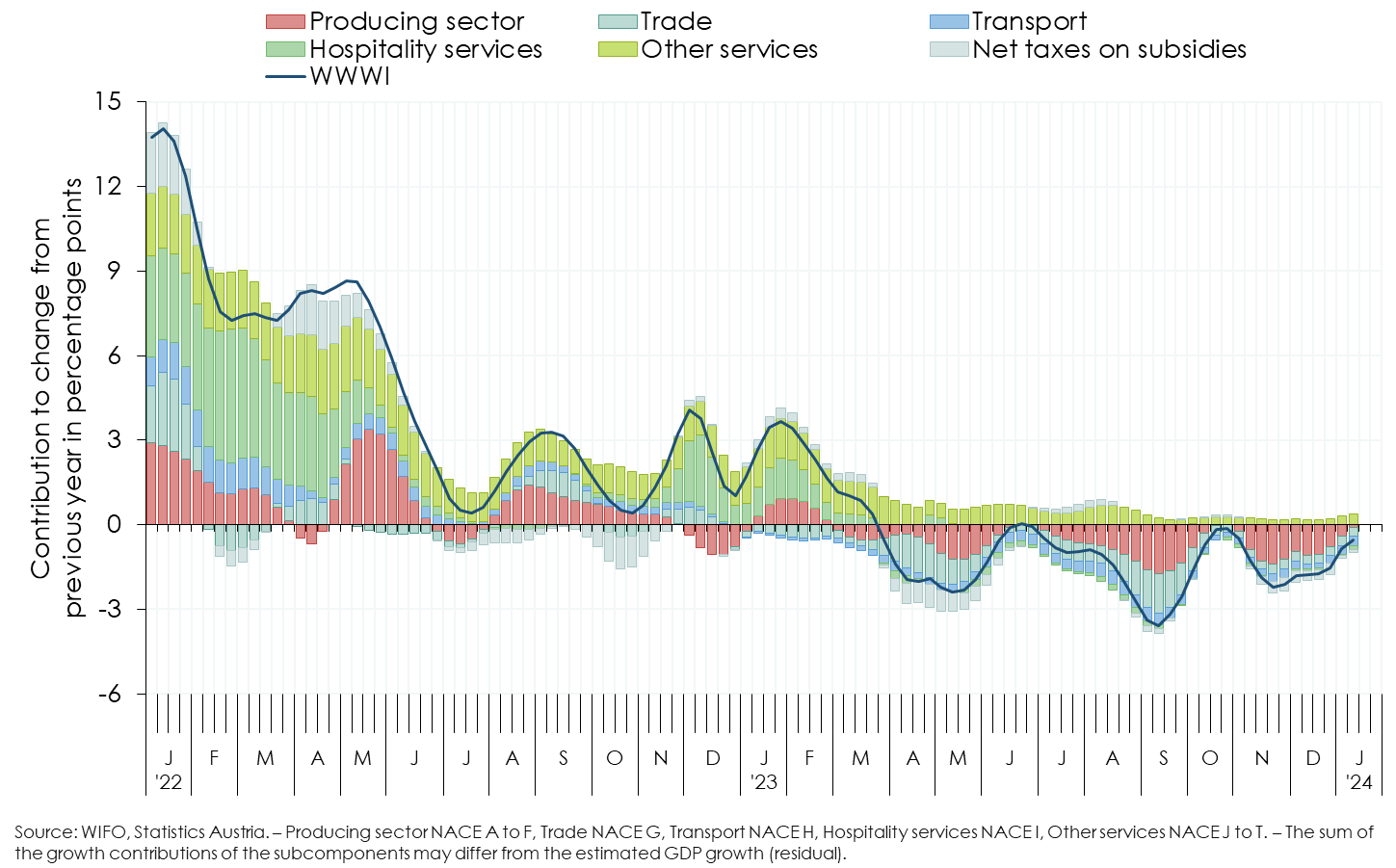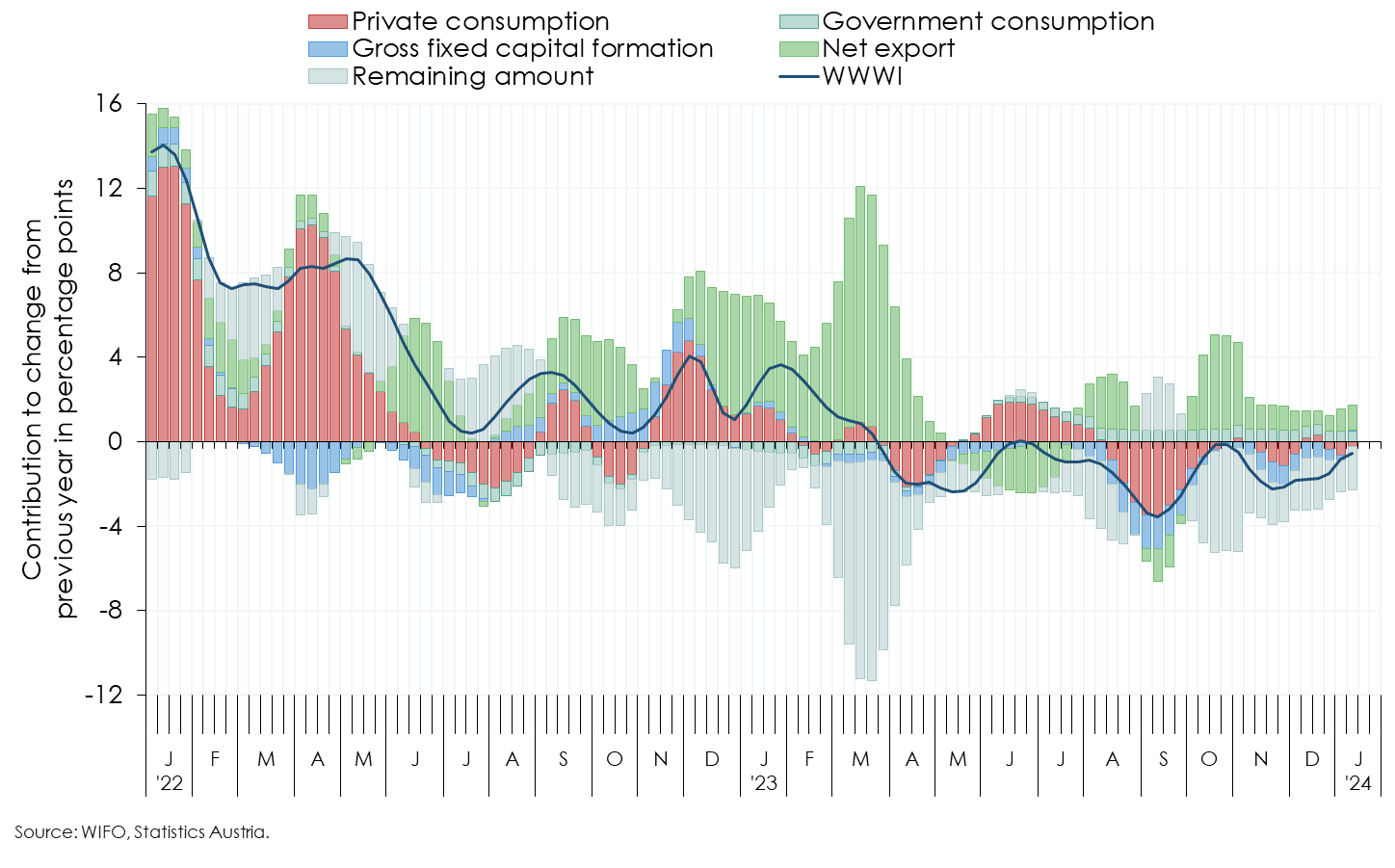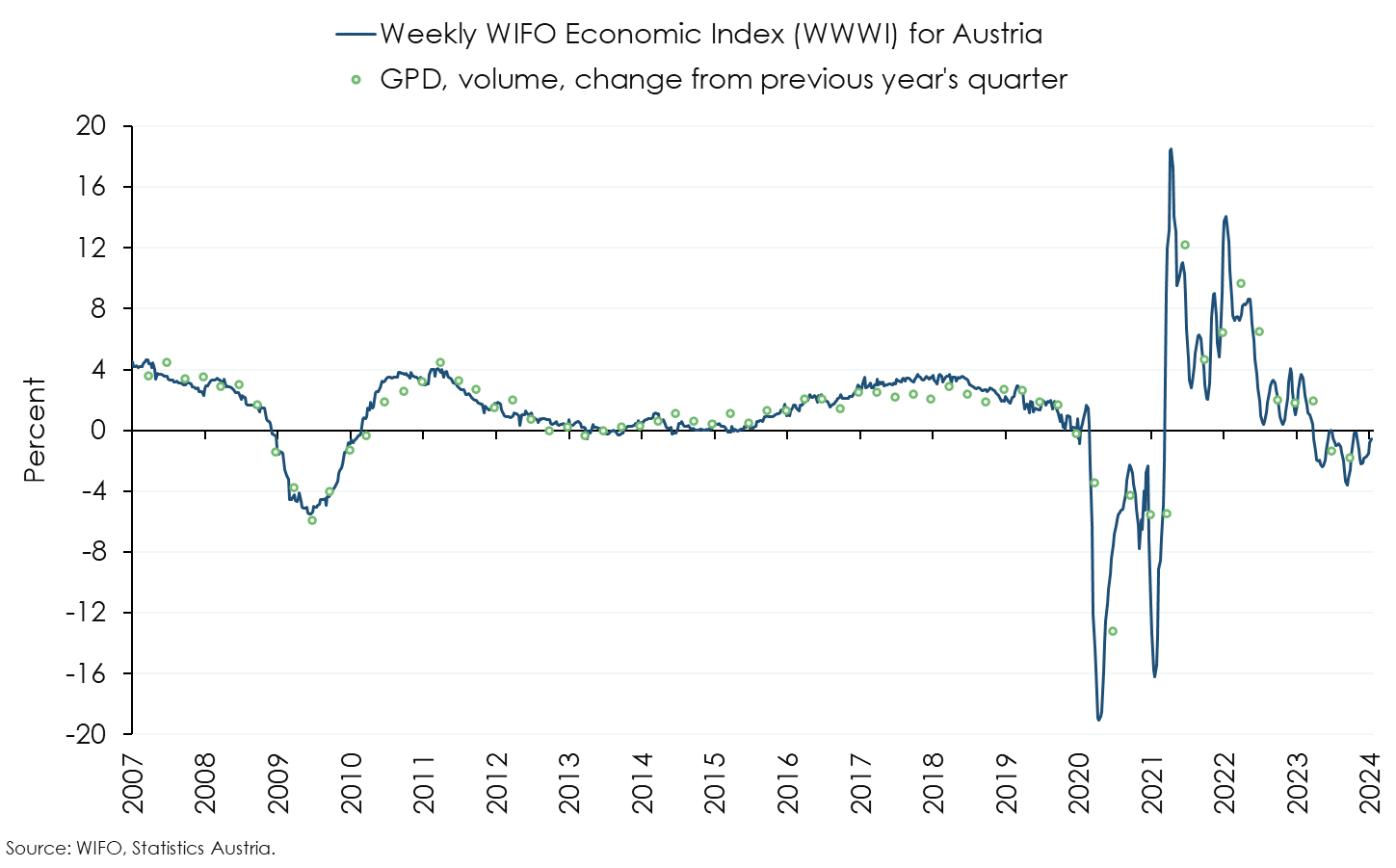
Weekly WIFO Economic Index
Information on the publication of the WWWI: The WWWI estimates are (currently) updated monthly and published on WIFO's website.
WWWI for GDP and its subcomponents
The inflation-adjusted volume of non-cash transactions, as an indicator of household consumption, shows a marked decline in demand for goods (retail sales) and a slight decline in services in November compared with a year earlier. Private consumption is estimated to have fallen by ½ percent year-on-year in November (October –½ percent, revised)1.
The development of gross fixed capital formation is determined by economic output (industrial production) and sentiment in the manufacturing sector (according to the WIFO-Konjunkturtest, business cycle survey). In November, the decline is estimated at 1½ percent compared to the previous year (October –1 percent, September –6 percent).
The number of trucks on Austria's motorways and the volume of rail freight transport fell again in November compared to the same period last year. In contrast, the number of flights handled at Vienna Airport continued to rise. While exports contracted more strongly, mainly due to a decline in exports of services, total imports fell only moderately. The estimated growth contribution of net exports in the broad sense to GDP was therefore negative at –¼ percentage point in November (October –½ percentage point).
The weakness of freight transport is also reflected in the value added of the transport sector (NACE H). At –6 percent, it remained below the level of a year ago (October –5¾ percent).
Although the number of unemployed persons in the producing sector remained at a low level in November by long-term standards, it has been rising increasingly year-on-year since April. The WIFO-Konjunkturtest continues to show a predominantly pessimistic sentiment among manufacturing firms, both in their assessment of the current situation and in their expectations for the coming months, although sentiment seems to have stabilised at a low level now. WIFO expects the value added in the goods-producing sector (NACE A to E) to have been 1½ percent lower in November than in the previous year (October ±0,0 percent, September –6½ percent).
According to the WIFO-Konjunkturtest (business survey), sentiment among construction companies did also not deteriorate further in November. The number of persons registered as unemployed in the construction sector has been rising for three quarters. Value added in the construction sector (NACE F) is expected to have fallen by 1½ percent year-on-year in November (October –1¼ percent, September –3½ percent).
Based on cashless transactions in hotels and restaurants, sentiment indicators from the WIFO-Konjunkturtest and online searches by foreign guests, value added in tourism (accommodation and food services, NACE I) is estimated to have been 3½ percent lower in November than in the same period last year (October –2¼ percent). In trade (NACE G), value added in November was 3½ percent lower year-on-year (October –4½ percent).
The momentum in other market services (NACE J to N) remained subdued, based on the indicators for the current situation and expectations from the WIFO-Konjunkturtest, the current employment situation and developments in manufacturing, with year-on-year growth in value added stagnating. In other personal services (NACE R to T), value added is estimated to have increased by 2½ percent year-on-year in November on the basis of price-adjusted non-cash payments in the event sector.




The WWWI is under constant development; it is regularly reviewed and will be expanded with new and additional weekly data series as they become available. The WWWI is not an official quarterly estimate, forecast or similar of WIFO.
Details on the Weekly WIFO Economic Index can be found here (xlsx).
The WIFO Weekly Economic Index (WWWI) is a measure of the real economic activity of the Austrian economy on a weekly and monthly frequency. It is based on weekly, monthly and quarterly time series to estimate weekly and monthly indicators for real GDP and 18 GDP sub-aggregates (use side 8, production side 10) of the Quarterly National Accounts.
With the release for June 2022, the econometric models for the historical decompositions and for nowcasting have been converted to seasonally unadjusted time series. In addition, year-on-year growth rates are now used to estimate the models.
The WWWI estimates are (currently) updated monthly and published on the WIFO website.

